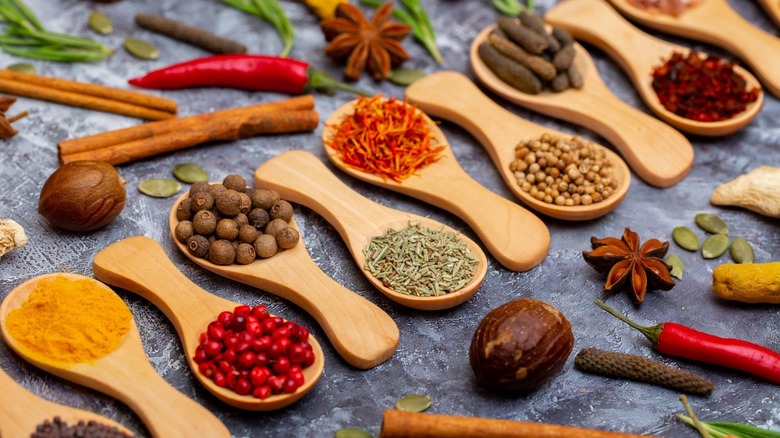The Mistake Everyone Makes When Building Their Spice Tolerance
So you would like to build your spice tolerance, but your experiments usually end in what feels like a life (and mouth) threatening episode. cutting your enthusiasm in this endeavor short.
Your forays in this field are likely inspired by the allure of warm, woody, sweet, and pungent odors that characterize Asian and Indian food. Who can blame you? These heavenly smells of these spices may effect various aspect of the eating experience such as salivation, hunger, and food choice, per Wageningen University. The palate, however, being a sensory part of the anatomy, is not always in agreement with what we choose and can revolt — sending its adventurous owner into a desperate scramble for liquids.
Food should always be enjoyed, per Well + Good, and not only for aesthetics but health reasons too. Spicy food is no exception. This poses the question: How do you enjoy food that you struggle to get past your tastebuds?
Learning to enjoy spice
Your mouth burns because of one little natural compound called capsaicin. This chemical occurs throughout the pepper family in varying quantities, and binds itself to the mouth's nerve endings, sometimes causing extreme discomfort. The mouth can feel like it is on fire for up to 15 minutes, according to "On Food and Cooking" author, Harold McGee (via Food Network), because that is how long it takes for capsaicin to dissolve.
The biggest mistake when training the palate to be tolerant is consuming a concentration of spice that is too high — in other words: food that is too hot for you. According to Slurp, you should "not overwhelm your mouth," and it stands to reason that if you do, it might put you off trying again. Eating spicy food regularly tempers your sense of taste, and you gradually build a spice tolerance. Start small, and work your way up. If you struggle to increase your heat, keep it at a comfortable level until your taste buds adjust. Remember, this is a journey into a new taste territory, so exercise patience.

